Tim Hornbaker has a genuine curiosity for the lives of the wrestlers and promoters that he writes about. You can sense it in the meticulousness of the research that he has used as the foundation of his work over the past two decades. Released in September, his newest book, Death Of The Territories: Expansion, Betrayal and the War That Changed Pro Wrestling Forever is the latest chapter in his ongoing chronicle of the history of professional wrestling. It takes on the end of wrestling’s territorial era, an time that still captures the imagination of many fans because of the incredible amount of bloodthirsty competition, underhandedness, and fantastic in-ring performances, that defined it.
“It’s fascinating to learn about these individuals,” Hornbaker tells SLAM! Wrestling. “You see what they did in the ring, and how they performed, and then to find out what they were like in real life, and what bothered them, and what were their hobbies, and what did they do when they weren’t wrestling. I want to know more about what they were dealing with and what were their personal tragedies. When they went into the ring on this date, did they have a heavy heart? There’s just so much you can do when you’re researching, and that’s why it’s fascinating to me.”
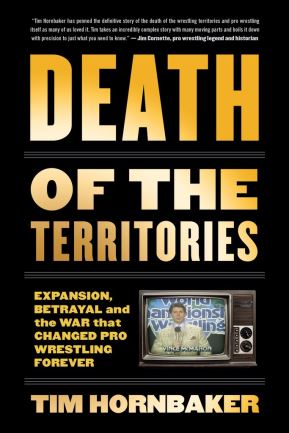
Hornbaker’s four published pro wrestling books now cover over 70 years of events. They stretch from the end of World War I, and the competition between promoters around New York, to the early days of the National Wrestling Alliance in the 1940s, through to the growth of the territory system and its eventual decline in the years just prior to the Monday Night Wars of the 1990s.
On his website, legacyofwrestling.com, you can find even more history. There, figures like “Dynamite” Gus Sonnenberg, the heavyweight champion of the late 1920s who thrilled crowds with his flying tackle, and Dr. B.F. Roller, the physician and showman who barnstormed around the world at the turn of the 20th century, get detailed biographies. It also includes information on the booking offices that supplied talent to the promoters of the National Wrestling Alliance, as well as the dozens of territories that comprised it.
Taken together, it gives as comprehensive an overview of the history of the business of wrestling as is available anywhere. The Wrestling Observer‘s Dave Meltzer gave Hornbaker a remarkable compliment when he called Hornbaker’s first book, National Wrestling Alliance: The Untold Story of the Monopoly that Strangled Pro Wrestling, the best book on wrestling history he’d ever read.
Wrestling has always intentionally been a sport without a clear history. Aside from magicians, no performer values secrets and misdirection more than a professional wrestler. Wrestlers and promoters were purposefully vague whenever interviewers asked questions about the inner-workings of their business. Wrestlers often performed using multiple names over their careers, and championships could switch hands, or even appear and disappear altogether, with little logic. Trying to trace any kind of coherent story was, and in many ways still is, a fool’s errand.
This all presents a unique challenge for anyone seriously interested in getting the history right. “You have to get in the flow of what you’re looking at, what you’re researching,” says Hornbaker. “There are two sides to professional wrestling, the side that is before the public and the side that’s behind the curtain. If you’re writing a book about professional wrestling, no matter what it is, you have to look at it from both perspectives.”
Up until the early 2000s, the only books on wrestling’s past that were readily available were a handful of pulpy biographies of major wrestlers and books like Bert Randolph Sugar and George Napolitano’s wonderful, but not wholly factual, The Pictorial History of Wrestling: The Good, the Bad and the Ugly. More detailed books like Marcus Griffin’s Fall Guys: The Barnums of Bounce, and Joe Jares’ Whatever Happened to Gorgeous George?, had been long out of print and only available through libraries. It wasn’t until fans began meeting in chat rooms and posting to message boards, like the ones at wrestlingclassics.com and kayfabememories.com, that wrestling’s true history began to be written.
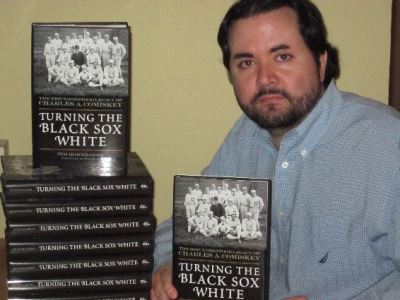
Tim Hornbaker with his book about the Chicago White Sox.
Hornbaker, though still only in his early 20s at the time, was among the group sharing information. “I [had] served in the army for a couple of years,” he says. “I was kind of at a crossroads where I was going to decide what kind of path I was going to take. At that point, it was more of a hobby to pick up wresting history. Going online and finding the boards … it was a turning point for me to be able to say, ‘This is more than just a hobby. This is something I’d like to take seriously.’ The late ’90s, early 2000s, were a breakthrough time for wrestling and for wrestling historians to share information. All of us were learning at the same time and then also contributing to the overall story of wrestling history.”
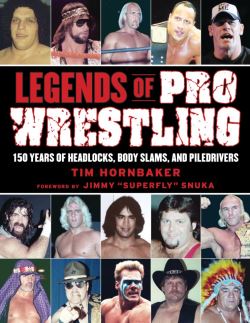
One of Hornbaker’s major contributions has been to track down troves of primary source material that had been filed away in court archives, or in forgotten corners of attics and basements. He’s done the hard work of going through the boxes of papers related to the FBI’s investigation of the National Wrestling Alliance, available at the National Archives in College Park, Maryland. He’s also tracked down the existing court papers from the 1936 lawsuit between Dick Shikat, Al Haft, and Joe Alvarez, that exposed the inner workings of wrestling in the early part of the 20th century.
“I probably have thousands of items of documentation on professional wrestling,” he says. “A lot of my searches have been swings and misses. I’ve tried to get scores and scores of court cases and files and paperwork. I’ve contacted families. Most of the time it’s unsuccessful. A lot of the court cases and what not come back and it’s irrelevant information, [or] there’s no supporting documentation. A lot of times I’ve reached out and tried to get the documentation and they’ve said, ‘The documents have been destroyed or they’re shredded.’ At one point, so much more was out there and available and here we are in 2018 and we have so much less to accumulate to help tell the story of wrestling history.”
In Death of the Territories, Hornbaker chronicles wrestling’s palmy days of the late 1970s and 1980s. The aging promoters of the National Wrestling Alliance had built well-defined bases of operation in specific areas of the country, and mostly worked together to share performers, as well as blacklist those considered to be difficult, or unwilling to work according to plan. By the early 1980s, wrestling was steady, if not excellent, business in most cities and towns.
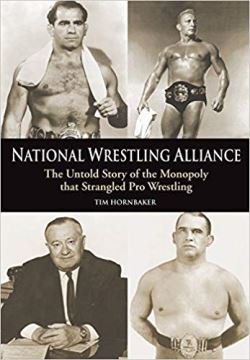 Younger promoters, though, like Bill Watts, Ole Anderson, and Jim Crockett, were showing an increasing willingness to disregard the agreements and conventions established by the earlier generation. By using emerging technologies like closed-circuit broadcasting, cable, and pay-per-view television, they soon became able to easily broadcast their programs across geographic lines.
Younger promoters, though, like Bill Watts, Ole Anderson, and Jim Crockett, were showing an increasing willingness to disregard the agreements and conventions established by the earlier generation. By using emerging technologies like closed-circuit broadcasting, cable, and pay-per-view television, they soon became able to easily broadcast their programs across geographic lines.
Additionally, younger wrestlers like Ric Flair and Ricky Steamboat in the late 1970s, and the Von Erich brothers, the Fabulous Freebirds, and the Fabulous Ones, in the 1980s, were helping to bring in younger fans. Many also began using entrance music to better effect. In 1981, when Music Television (MTV) premiered, some in the business were beginning to understand the possibilities it presented both in how it could influence the presentation of wrestling, and as a vehicle for bringing in even more fans. In less than three years, before many could grasp what was happening, Vince McMahon, the son and namesake of World Wide Wrestling Federation promoter Vincent J. McMahon, was signing performers to exclusive contracts, presenting his shows in areas previously considered off-limits, purchasing away valuable airtime on local television stations, and generally wrecking havoc on a national scale.
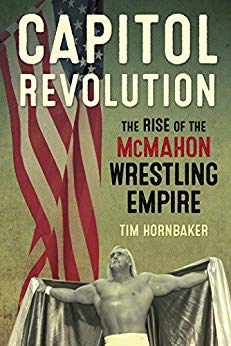
While the story now seems straightforward in retrospect, it was really anything but.
“In the beginning I was overwhelmed,” says Hornbaker. “There was so much information and so many ways to tell the story. I wanted to tell it in a chronological narrative and that in and of itself was a challenge because there were so many different promotions, so many different territories, and so many different promoters and wrestlers. How do you write this book without making it too convoluted and have it appear unorganized? How do you keep the story flowing? What were the major events? I started looking at Vince McMahon’s national expansion and finding out how it progressed. Where did he go first and then how did it effect the territories? It was a big challenge to keep it organized and tell it in a succinct way.”
The book’s main strength is that it avoids indulging in the worn down storylines and shorthand that has come to dominate discussion on this era; of incompetent matchmaking and so-called “Dusty finishes,” in reference to match-maker and wrestler Dusty Rhodes, and of aging stars like the American Wrestling Association’s Verne Gagne refusing to modernize. While these contain a lot of truth, they brush over the deeper struggles and dramas that were actually playing out. In many cases, promoters were defending business they’d spent decades building, and which many were planning to pass on to their children. Wrestlers were often working punishing schedules and for fans in certain area, the end of a territorial promotion meant the end of a weekly or monthly ritual of attending matches, often as part of a community of local fans.
“It’s hard not to feel sympathy for what they went through..It’s kind of depressing how Vince McMahon effected the business and effected these family business and effected the future of a lot of these families. At the same time, and I’m not going to pinpoint any one, but even if you pinpoint the NWA as a whole, the NWA was actually charged by the government for anti-trust violations,” he says.
One fact the book makes clear, which was certainly not clear to wrestling fans of the 1980s, is that McMahon’s eventual monopolization of wrestling was far from a certainty. Territorial promoters were staging cards that drew thousands of fans throughtout the 1980s. Verne Gagne’s AWA was seen nationally on ESPN for most of the later part of the decades, and McMahon, fighting competition on all fronts, was stretched thinner than a piece of plastic wrap.
“Nothing was guaranteed,” says Hornbaker. “I think McMahon just played his cards right and some of these other guys were in over their heads. And when you start pulling Junkyard Dog, Roddy Piper, Randy Savage, and even going back to Hulk Hogan, and pulling these guys out of the territorial system, you’re leaving big holes for these other promoters. And you add that in with everything else and these promoters had nothing to work with. They still had good talent, don’t get me wrong, but they were hurt.”
McMahon did eventually outlast all of his competition, of course. Fans born in the 1990s and beyond, and reared only on his re-branded World Wrestling Entertainment (WWE), may have little sense of anything that came before it. And crucially, what they do know is filtered through the WWE’s particular take on history. It’s what makes the work people like Hornbaker are doing so valuable.
Bits and pieces of wrestling history continue to be lost on a steady basis, as wrestlers and associated business people pass way, and extended family members discard old photo albums, letters, and other records, just because they can’t see the value or don’t know who to hand them off to. Many who do come across important records or memorabilia often lack the resources to preserve them and share them.
“The holy grail of wrestling for me, in terms of documentation, isn’t even a document,” Hornbaker says. “It’s a photo. There’s a photo that’s the original photo from the first National Wrestling Alliance meeting in Waterloo, Iowa. It’s just the gentlemen sitting at a table. I don’t know if it still exists. I know that it was in the [Jack] Pfefer collection [at the University of Notre Dame] at one point. I know that Sam Muchnick had it. I was in correspondence with his son and the son of [Iowa promoter] Pinkie George, and they don’t have it. That one photo is something I would love to have, or even see or just know that it’s still in existence. Unfortunately I don’t think that it is.”
Hornbaker, now 41, lives in Tamarac, Florida with his wife Jodi. Backed by his steady output of work, he supports himself with his writing. And with his latest book just becoming available, Hornbaker, who has also written books on baseball players “Shoeless Joe” Jackson and Ty Cobb, and Chicago White Sox owner Charles A. Comiskey, is already setting to work on a new project. While he’s keeping the details to himself, from what he was willing to share in confidence, it’s safe to say that it will thrill fans interested in wrestling’s past. “We’ve lost so much,” he says, “anything we can get our hands on is like gold, to help us piece this stuff back together.”
RELATED LINKS

